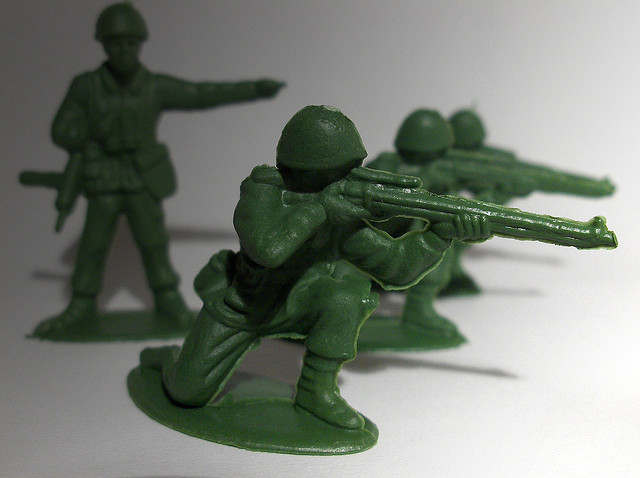The biggest target during war is the supply chain vehicles of the other side. These supply convoys usually carry the essential items that the soldiers need in the battlefield. The bombarding of these vehicles not only drills a hole in the pocket of the nation but also results in the loss of lives and materials. In order to stop this and bring down the cost incurred in transporting materials from one part of the country to the war site, many countries including US and Australia are looking forward to bringing 3D Printing technology in the war front.
3D Printing of Surgical Kits:
The US Army and a group of Navy researchers have developed a plastic surgical kit that can be printed in the site and used to operate and treat the wounded in the battlefield. The research team stated in a recent technical briefing of the product, “Over a period of less than three months the team developed and demonstrated the ability to produce sterile surgical instruments in a field setting using a material extrusion 3D printer, rapid trials of the instrument designs resulted in a functional surgical kit which could be printed in a single build on the 3D printer. At the conclusion of the project the 3D printer and surgical instrument kit were demonstrated in a mock field surgery.” The items that are included in the kit are: a Kelly hemostat, needle driver, tissue forceps, retractor, scalpel handle and Metzenbaum scissors. All these were developed at the Stratasys.
3D Printing Platoons:
Australia is looking forward to make specialized units in the army that could consist of around 30-40 soldiers who would make the essential army equipments with the help of 3D printing technology. Except for food, water, fuel and ammunition everything else could be 3D Printing by this platoon. As per Australian Army Lieutenant Jacob Choi, “You might have the light guys doing a lot of repair parts for rifles, armaments, vehicles, if you have a heavy unit able to print the most delicate parts, they might be able to print things up to the size of a Humvee or a Land Rover as well. These are just my concepts and ideas.” Lieutenant Choi hopes to utilize the full benefits of 3D printing in the Australian army by 2020.
US is also catching up with the Australian army, the army chief technology officer Grace Bochenek said that the army scientists are designing and constructing items such as printed parts of protective masks, holders for improvised explosive device detectors, medical prosthetics and explosives. Researchers have also made 3-D printed batteries, antennas, fuse elements and wings for unmanned aircraft, according to the service.
The other technology that the Army is eyeing is that of 4D printing in which the configuration or the internal properties of a 3D printed part changes over time in order to gel with the environment such as water, light or extreme temperatures.
Will 3D printing change the face of war? Will the implantation of this technology prove to be a boon for the defense system of a country? What do you think?
Image Credit: Tim Bunce (flickrhandle: eyeonthesky)
